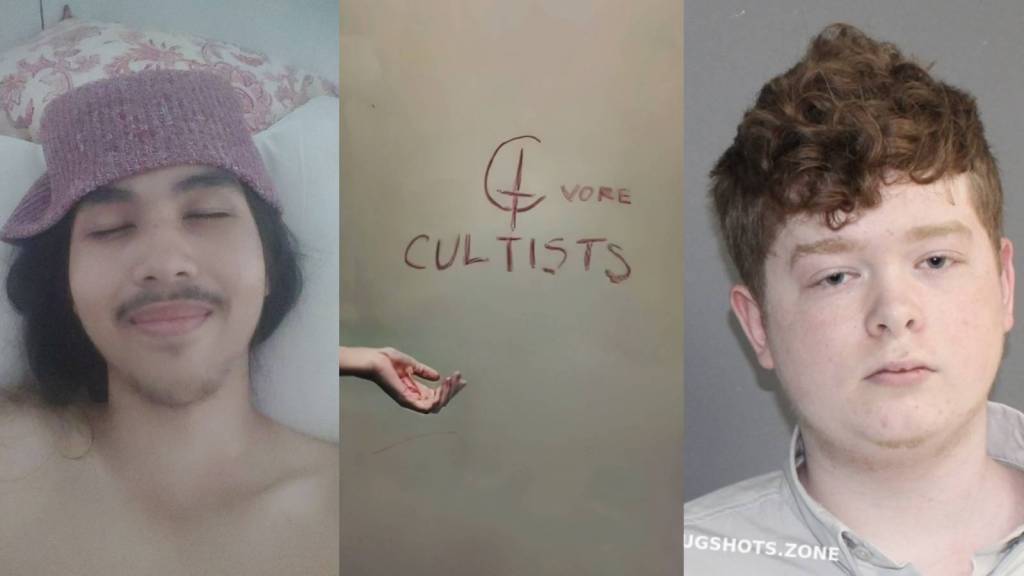Tyler the Creator figures out how his favourite things (like stop motion) work on our new VICELAND show NUTS & BOLTS. You can watch it Tuesdays at 7.30 PM from September 19 on VICELAND, SKY Channel 13. And if you’re in Auckland, come by Eight Thirty, 19 Anzac Ave tomorrow, September 14, any time from 7.30-9.30 AM for coffee, brekkie and to watch an ep. RSVP here.
The day is November 19, 1995 and the film industry is about to change forever. Toy Story is released in cinemas. The directorial debut of John Lasseter was the first feature-length film created on nothing but a computer, and a milestone event that would reshape the entire animated industry.
Videos by VICE
Since then no fewer than 300 computer-animated films have been released globally, an average of over one a month. And as computer animation experienced its meteoric rise, stop motion began to sidle slowly to the back row. Franchises Star Wars, Terminator and King Kong, once pillars of the stop motion world, all transitioned over to computer-generated effects. It was giant leap for the industry and one that threatened to leave the stop motion process well and truly in the past.
So, whatever happened to the love for stop motion animation? The short answer? Nothing. Nothing at all.
It is hard for me to get romantic about stop motion without first talking about The Empire Strikes Back.

Who can forget the sight of a giant imperial walker trudging across the ice planet of Hoth, dwarfing the small scattering of rebel soldiers that run hopelessly in its wake? As a child, it was the sight of emphatic defeat, a rampaging monster ready to destroy rebel scum. In reality, it was anything but.
What you don’t see is the layers of baking powder being laid down in the place of snow, or the man who hand painted a backdrop so realistic it is never questioned. You definitely don’t see the man under the table making sure each micro adjustment of the four-legged figure hits its mark. It is a scene that still resonates today and one that will continue to do so well into the future.
So why make the change to new technologies?
It took an entire day’s shooting to get five seconds of footage.
The process of stop motion animation is one that takes time and in a market of dominated by money, feature films have transitioned into the quicker, easier territory of CG animation. The question now is why anyone would still be using stop motion at all.
Auckland animator Ryan Kothe is one of New Zealand’s premiere stop motion animators, and he says it is passion for the art form that will see it thrive.
“It takes forever in that process,” he says. “You need that patience, frame by frame, photo by photo. What you get is what you work with and the surprise when you see it in life is so rewarding.”
Kothe says there is a mutual respect that exists between the audience and the animator, a connection that doesn’t aim to hide the fact that human fingers that spent hundreds of hours painstakingly constructing artificial motion.
“People act like mistakes are wrong, [but] mistakes in art are welcome, it adds to that authenticity.”
“That’s why I don’t use any software, I wing it. The software makes everything too accurate in my opinion. Stop motion needs the blemish, the off pieces.”
It is in this perfect imperfection that Kothe sees the future of stop motion. With an emphasis on new technologies in the tech industry, he believes stop motion will live in its ability to connect with audiences.
“That connection is so important. There is so much importance on getting things out quickly nowadays. You don’t have that time so you do have to take some shortcuts. These tech options are a bonus but you still feel a little short. There is nothing too authentic about it, but with stop motion you are creating something your own way.”
While stop motion is overwhelmed in the modern market by its CG counterparts, workmanship and passion for the medium have seen it thrive artistically.

Travis Knight’s Kubo and the Two Strings (2016) is one of only two animated films to win the Academy Award for best visual effects. The other one was the 1993 Tim Burton film The Nightmare Before Christmas, yet another stop motion picture.
It is the workmanship and time put into the craft that sees it so well regarded. Kubo and the Two Strings’ celebrated skeleton set piece has set a new benchmark for stop motion animation. A 16-foot model was constructed for the 49 second scene and took over six months to shoot.
It’s the 16-foot-tall models, Ryan Kothe’s miniatures, the time, persistence, blood, sweat and tears that make the art form so enduring. And while its place in the live-action world may be confined to VHS tapes, stop motion animation is proof that great art won’t be rushed.
Check out just what it takes to make stop motion when Tyler the Creator gives it a go on the premiere episode of NUTS & BOLTS, airing Tuesdays, 7.30 PM from September 19 on VICELAND, SKY Channel 13.




